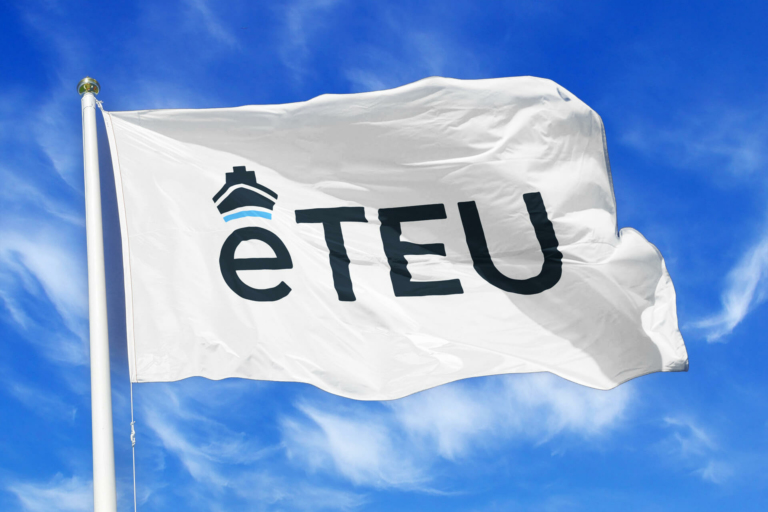The groundbreaking “Electronic Trade Documents Act 2023” officially garnered Royal Assent on the 20th of July, 2023, following a meticulous development process spearheaded by the Law Commission. This was an extensive collaborative effort encompassing consultations with a diverse array of stakeholders, including shipping conglomerates, freight forwarders, and pioneering tech companies, notably eTEU.
In this article, we delve into the intricacies of this novel legislation, elucidating its significance, the content it prescribes, and the potential trajectory for the logistics industry as it navigates this freshly charted territory of electronic document regulation.
This progressive legislative move mirrors the Law Commission’s responsiveness to the global trend towards the digitisation of trade documents within the logistics sector. One such early legislative innovation was the “UNCITRAL Model Law on Electronic Transferable Records.” It’s evident that the UK lawmakers were largely inspired by this approach, primarily seen in the legislation’s network neutrality and its emphasis on providing a structural framework rather than establishing another governmental body to certify every system engaged in the eDocuments exchange.
Before delving into the robustness and efficacy of this legislative framework, it’s crucial first to understand the fundamental principles that underpin the “Electronic Trade Documents Act 2023.”
Dissecting the Act
The principal objective of the “Electronic Trade Documents Act 2023” is to create a functional equivalence between traditional paper trade documents and their electronic counterparts as delineated in the Act. The legislation does not offer an exhaustive list of paper documents eligible for conversion into electronic format. Instead, it provides an overarching framework for the documents that can transition into the digital realm, as described in section 1, article 1:
“(a) It exists in paper form,
(b) It is a document type frequently employed in at least one part of the United Kingdom related to—
(i) the trade or transportation of goods, or
(ii) the financing of such trade or transport, and
(c) The law or commercial custom, usage, or practice requires possession of the document for a person to claim performance of an obligation.”
To preclude any ambiguity about the digitisation of certain key documents, the Act specifies a concise illustrative list:
“(a) a bill of exchange;
(b) a promissory note;
(c) a bill of lading;
(d) a ship’s delivery order;
(e) a warehouse receipt;
(f) a mate’s receipt;
(g) a marine insurance policy;
(h) a cargo insurance certificate.”
This enumeration covers the most frequently issued paper trade documents.
The Act’s definition of an electronic trade document leverages the concept of using advanced technologies, like distributed ledger, to create digital assets emulating the unique properties of their physical counterparts. This includes the singularity of a document, its non-duplicable nature, the document holder’s absolute control until transfer, and the subsequent total relinquishment of control to the transferee. Crucially, the ability to view the document does not equate to possession—ownership is predicated on the exclusive ability to control and transfer the asset.
Regarding the systems facilitating electronic document transfers, the Act maintains a market-neutral stance, mandating only that the system must be “reliable.” This stipulation has been the focal point of industry discussions. The Act suggests several considerations to evaluate system reliability for electronic document transfer:
(a) The system’s operational rules,
(b) Measures taken to secure the integrity of information on the system,
(c) Steps taken to prevent unauthorised access and system use,
(d) The hardware and software security used by the system,
(e) The regularity and extent of independent system audits,
(f) Any reliability assessments conducted by a regulatory or supervisory body,
(g) The voluntary scheme provisions or industry standards applicable to the system.
Such phrasing underscores the regulatory bodies’ free-market approach. The Law Commission states:
“We do not think the Bill should provide for a separate accreditation process, ensuring a certain level of system reliability objectivity. Mandating specific systems to receive accreditation from a national or state-appointed regulator could be burdensome and delay the transition to electronic trade documents while setting up such an accreditation system. We believe such matters are more effectively addressed via industry standards, reflecting the dynamic evolution of technology in this sphere.”
Embracing Flexibility
This legislation indeed ushers in a degree of ambiguity, and as several legal scholars have observed, it will be a while before a comprehensive court precedent emerges to delineate the term “reliability.” Debates are rife about the feasibility of employing electronic trade documents before such clarification transpires. However, we suggest that such concerns are overstated.
First, the forgery risk associated with paper documents notably surpasses that of their electronic counterparts, especially when transmitted via an industry-standard, blockchain-based platform. The transparency of blockchain technology ensures that all transactions are indelibly recorded. In the context of digital trade documents, this means that each document’s journey can be effortlessly traced. If the platform uses a public blockchain, all shipment-involved parties can access the transaction history of a specific document via a blockchain browser, which displays the document’s ID and transfer specifics—drastically reducing forgery prospects.
Second, the logistics industry has historically benefited from self-regulated industry standards—think standardized containers or ISO regulations such as ISO 9001. We’re already witnessing the industry gravitating towards self-regulation, facilitated by the collaborative efforts of influential players. For instance, the Digital Container Shipping Association (DCSA), a consortium of the largest shipping lines, is currently developing standard electronic trade documents. The International Group of P&I Clubs (IGP&I) also maintains a commission responsible for certifying electronic documentation platforms looking to serve logistics companies.
Conclusion
Thus, we view the Law Commission’s approach—avoiding rigid, imposed standards or another governmental body tasked with certifying each platform’s “reliability”—as eminently rational. Such a course avoids the creation of a new set of problems, bureaucratic hindrances, and inflexibility.
The worldwide transition towards electronic documents is not only warranted but also arguably overdue. We now possess the requisite technological tools to construct digital assets that, while mirroring the attributes of their physical counterparts, also offer enhanced portability, robust tamper-proofing, and a significantly reduced environmental footprint. Legal systems globally need to expedite their pace to keep up. Jurisdictions that follow the UK’s lead by adopting a flexible framework—thereby enabling market participants to leverage these technological advancements—stand to gain the most.
After all, the Digital Container Shipping Association (DCSA)—a conglomerate that includes industry heavyweights like MSC, Maersk, CMA CGM, Hapag-Lloyd, ONE, Evergreen, Yang Ming, HMM, ZIM, and others—has pledged to achieve a 100% electronic bill of lading by 2030. The inherent flexibility of the “Electronic Trade Documents Act 2023” empowers such professional consortiums to deploy their best practices across multiple jurisdictions. Conversely, attempting to establish rigid regulations and certification authorities could result in severe delays and complications when orchestrating complex, multimodal logistics chains.


